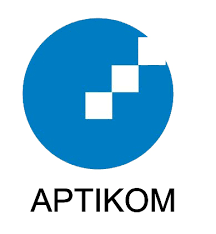The Influence of Developing an Understanding of Basic Programming Concepts Through Educational Games as A Learning Method For Elementary School Students.
DOI:
https://doi.org/10.18196/eist.v5i2.24781Keywords:
educational games, programming education, elementary education, learning methods, quasi-experimental designAbstract
Integrating engaging learning methods into the educational landscape has become increasingly crucial for enhancing student understanding and engagement. This study investigates the impact of educational games as a learning method for improving elementary school students' comprehension of basic programming concepts. The research hypothesizes that educational games can significantly enhance the understanding of programming concepts by making abstract ideas more tangible and engaging through interactive and enjoyable learning environments. Using a quasi-experimental design, the study involved two groups of elementary school students: the experimental group, which utilized an educational game designed for teaching introductory programming concepts, and the control group, which received traditional instruction. Both groups underwent assessments of their understanding of basic programming concepts before and after the intervention through standardized tests. The results demonstrated a statistically significant improvement in the scores of students in the experimental group compared to those in the control group. This suggests that educational games not only aid in better understanding complex subjects such as programming and increase students' motivation and engagement levels. The findings of this study contribute to educational practices by illustrating how educational games can effectively support the introduction and teaching of programming at an early age within the elementary educational system. Furthermore, the study highlights the potential of integrating such tools into standard curricula to enhance student learning across various subjects. The study urges future research to explore the long-term impacts of educational games on learning outcomes and how these tools can be further integrated into the educational systemReferences
H. BUČKOVÁ, “Programming for Kids - Suitable Tools for the Development of Computational Thinking,” Trends Educ., vol. 11, no. 2, pp. 17–28, Dec. 2018, doi: 10.5507/tvv.2018.020.
E. Ratinho and C. Martins, “The role of gamified learning strategies in student’s motivation in high school and higher education: A systematic review,” Heliyon, vol. 9, no. 8, p. e19033, Aug. 2023, doi: 10.1016/j.heliyon.2023.e19033.
A. Muklason et al., “Coding for Kids: Pengenalan Pemrograman untuk Anak Sekolah Dasar sebagai Literasi Digital Baru di Industri 4.0,” Sewagati, vol. 7, no. 3, Mar. 2023, doi: 10.12962/j26139960.v7i3.506.
Andree E. Widjaja, Kusno Prasetya, Alfa Satya Putra, Calandra Alencia Haryani, Hery, and Irene Eka Sri Saraswati, “Pengenalan dan Pelatihan Dasar Algoritma Pemograman Menggunakan Aplikasi Thunkable Bagi Siswa SD St. Theresia Jakarta,” GIAT Teknol. untuk Masy., vol. 1, no. 1, pp. 12–24, May 2022, doi: 10.24002/giat.v1i1.5851.
S. Jiang, “A Review of the Effectiveness of Gamification in Education,” SSRN Electron. J., 2016, doi: 10.2139/ssrn.3163896.
A. Premana, A. P. Wijaya, R. R. Yono, and S. N. Hayati, “Media Pembelajaran Pengenalan Bahasa Pemrograman Pada Anak Usia Dini Berbasis Game,” Tekinfo J. Bid. Tek. Ind. dan Tek. Inform., vol. 23, no. 2, pp. 66–75, Oct. 2022, doi: 10.37817/tekinfo.v23i2.2597.
R. Kadel, K. Paudel, and M. P. Gurung, “A Review on Educational Games Design, Development and Effectiveness Measurement,” in 2019 IEEE International Conference on Engineering, Technology and Education (TALE), Dec. 2019, pp. 1–7, doi: 10.1109/TALE48000.2019.9225880.
L. E. T. Forquesato and J. F. Borin, “Kids Block Coding Game: A game to introduce programming to kids,” Jul. 2018, doi: 10.5753/wei.2018.3502.
V. Tinedi, Y. Yohandri, and D. Djamas, “How Games are Designed to Increase Students’ Motivation in Learning Physics? A Literature Review,” IOP Conf. Ser. Mater. Sci. Eng., vol. 335, no. 1, p. 12065, 2018, doi: 10.1088/1757-899X/335/1/012065.
I. Rogozhkina and A. Kushnirenko, “PiktoMir: teaching programming concepts to preschoolers with a new tutorial environment,” Procedia - Soc. Behav. Sci., vol. 28, pp. 601–605, 2011, doi: 10.1016/j.sbspro.2011.11.114.
T. H. Laine and R. S. N. Lindberg, “Designing Engaging Games for Education: A Systematic Literature Review on Game Motivators and Design Principles,” IEEE Trans. Learn. Technol., vol. 13, no. 4, pp. 804–821, Oct. 2020, doi: 10.1109/TLT.2020.3018503.
M. B. Firmansyah and D. Zalilludin, “Rancang Bangun Game Pembelajaran Bahasa Pemrograman Dasar Dengan Nama Code Augmented Reality Puzzle Menggunakan Unity 3D & Vuforia Berbasis Android,” Pros. 13th Ind. Res. Work. Natl. Semin., vol. 13, no. 01, pp. 13–14, 2022, [Online]. Available: https://jurnal.polban.ac.id/ojs-3.1.2/proceeding/article/view/4326.
W. Windy and A. A. Fajrin, “Perancangan Game Edukasi Pembelajaran Bahasa Pemrograman Java Berbasis Android,” Comput. Sci. Ind. Eng., vol. 9, no. 1, Sep. 2023, doi: 10.33884/comasiejournal.v9i1.7393.
Patmah Fatoni and Mira Rosalina, “Efektifitas Penggunaan Games Edukasi untuk Meningkatkan Kemampuan dan Hasil Belajar Siswa dengan Aplikasi Mobile Learning pada Mata Kuliah Computer Programming,” Inf. (Jurnal Inform. dan Sist. Informasi), vol. 13, no. 1, pp. 80–96, May 2021, doi: 10.37424/informasi.v13i1.74.
M. L. Maciejewski, “Quasi-experimental design,” Biostat. Epidemiol., vol. 4, no. 1, pp. 38–47, Jan. 2020, doi: 10.1080/24709360.2018.1477468.



